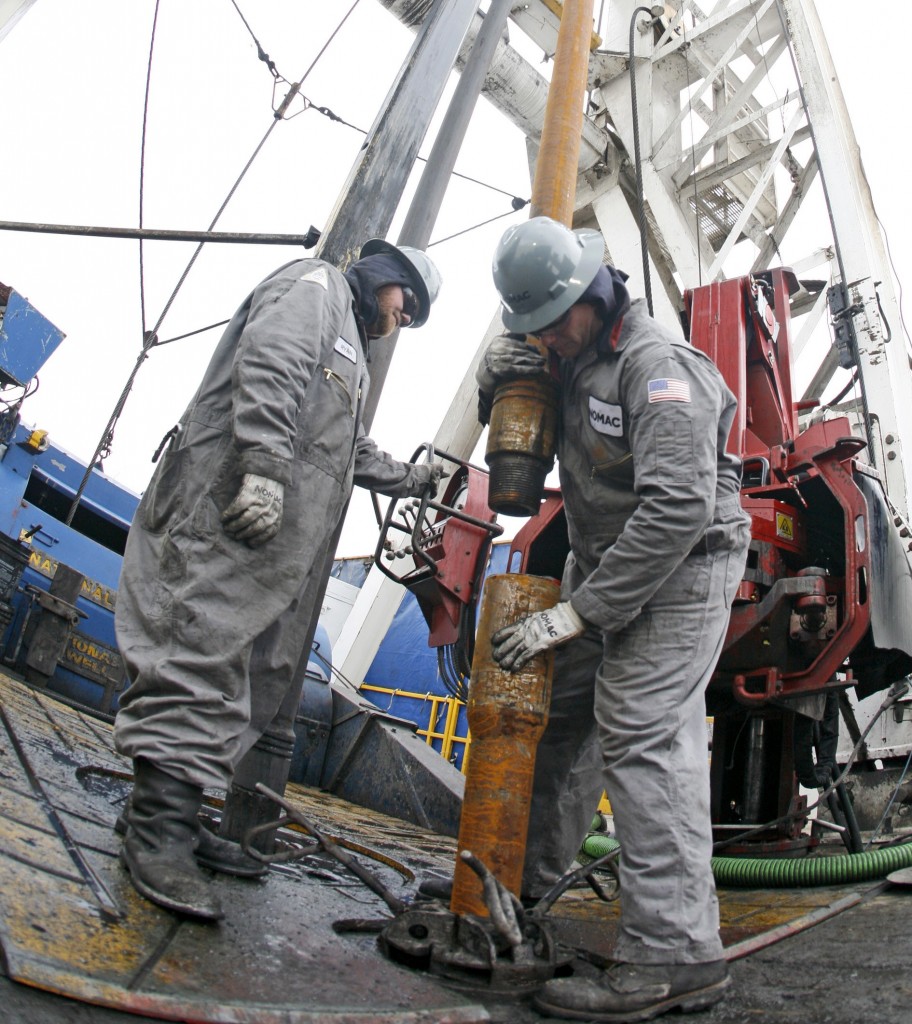 On Labor Day we wrote about the fact that workers employed by polluters are often as much at risk from exposure to the polluters' poisons as near-by homeowners. A new peer-reviewed study of six fracking sites in Colorado and Wyoming published by the National Institute of Occupational Heath and Safety (NIOSH) is fresh proof of this, showing 15 of 17 tests for Benzene exposure among workers who were monitoring on-site fracking well "flowback" exceeded the federal eight-hour exposure limit.
On Labor Day we wrote about the fact that workers employed by polluters are often as much at risk from exposure to the polluters' poisons as near-by homeowners. A new peer-reviewed study of six fracking sites in Colorado and Wyoming published by the National Institute of Occupational Heath and Safety (NIOSH) is fresh proof of this, showing 15 of 17 tests for Benzene exposure among workers who were monitoring on-site fracking well "flowback" exceeded the federal eight-hour exposure limit.
The study looked at drill site workers who use a gauge to measure the amount of "flowback" water that returns after a frack job is initiated. Flowback is the regurgitation of the fracking fluids from the well itself. It's collected on the surface after hydraulic fracturing is completed.
Benzene is a known carcinogen that's routinely present in fracking flowback water. It’s the same poison found in gasoline, cigarette smoke and a lot of chemical manufacturing and refining. It's been directly linked or associated with leukemia and other conditions, such as Acute Myelogenous Leukemia (AML), Chronic Myelogenous Leukemia (CML), Acute Lymphocytic Leukemia (ALL), Chronic Lymphocytic Leukemia (CLL), Hairy Cell Leukemia (HCL), Non-Hodgkin’s Lymphoma, Multiple Myeloma, Myelodysplastic Syndrome (MDL), Myelofibrosis and Myeloid Metaplasia, Aplastic Anemia and Thrombocytopenic Purpura.
NIOSH found "airborne concentrations of hydrocarbons, in general, and benzene, specifically, varied considerably during flowback and can be unpredictable, indicating that a conservative approach to protecting workers from exposure is warranted. Hydrocarbon emissions during flowback operations also showed the potential to generate flammable and explosive concentrations depending on time and where measurements were made, and the volume of hydrocarbon emissions produced.”
These weren't just the results of real time air monitoring at the fracking sites. Urine samples of the workers were also taken, making the connection between exposure and absorption into the body.
Although he wasn't an author,
Dr. Bernard Goldstein from the University of Pittsburgh School of Public Health says the study shows,
"These workers are at higher risk for leukemia. The longer, the more frequently they do this, the more likely they are to get leukemia particularly if the levels are high.”
And some of the test results were indeed very high. Results show levels reaching 200 parts per million over a 15-minute period. The federal limit is 1 ppm. But reader, will it come as any great surprise that fracking is exempt from that federal standard? We didn't think so.
NIOSH says their results can't be used to draw any conclusions about exposures to nearby residents, but looking at the data Goldstein says it certainly suggests there's a danger. "Results from this worker study shows that there could be potential risks to residents as well."
Barnett Shale residents know this. In 2009, the much maligned, but TCEQ-approved "Ft. Worth Study" found downwind Benzene levels at one well at 150 ppm and 110 ppm at a compressor station. But that was an exception. There's no real time monitoring of oil and gas facilities for Benzene or any other poison they might be emitting, so there's no way to tell what's being released or at what levels. It's all based on estimates provided by the frackers themselves, and then approved by the government arm of industry in Texas – the Texas Commission on Environmental Quality.
According to Goldstein, “We’re not acting in a way to protect the public who are at high risk. And we can’t even tell you who is at high risk. Yet we’re rushing ahead in a situation where all of the data are telling us that there are risks.”
NIOSH representatives said studies with larger sample sizes should be done as a follow-up but none are scheduled at this point. They also listed a number of recommendations to take to reduce benzene levels on the job site, including changing tank gauging procedures, training workers, limiting exposure times, carrying gas monitors, using respiratory and hand protection, and monitoring exposure levels. But when you're exempt from the standard you're accused of violating, what's the incentive to comply with these measures?
And any way, that all depends on voluntary compliance and adherence in the field. As every downwinder knows, there's the way industry is supposed to operate, and the way it actually operates. Too often even when there's known dangers involved, time and money pressures, lack of education or training, or outright neglect and abuse override theory. That's why it's necessary for citizens to do the job of monitoring and reporting themselves. Environmental protection is a do-it-yourself job – and that goes for workers as well as downwinders.
 On Labor Day we wrote about the fact that workers employed by polluters are often as much at risk from exposure to the polluters' poisons as near-by homeowners. A new peer-reviewed study of six fracking sites in Colorado and Wyoming published by the National Institute of Occupational Heath and Safety (NIOSH) is fresh proof of this, showing 15 of 17 tests for Benzene exposure among workers who were monitoring on-site fracking well "flowback" exceeded the federal eight-hour exposure limit.
On Labor Day we wrote about the fact that workers employed by polluters are often as much at risk from exposure to the polluters' poisons as near-by homeowners. A new peer-reviewed study of six fracking sites in Colorado and Wyoming published by the National Institute of Occupational Heath and Safety (NIOSH) is fresh proof of this, showing 15 of 17 tests for Benzene exposure among workers who were monitoring on-site fracking well "flowback" exceeded the federal eight-hour exposure limit.
